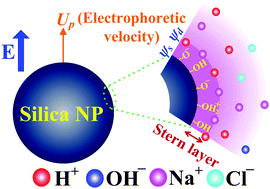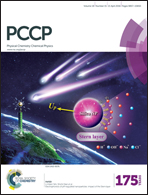Electrophoresis of pH-regulated nanoparticles: impact of the Stern layer
Abstract
A multi-ion model taking into account the Stern layer effect and the surface chemistry reactions is developed for the first time to investigate the surface charge properties and electrophoresis of pH-regulated silica nanoparticles (NPs). The applicability of the model is validated by comparing its prediction to the experimental data of the electrophoretic mobility of silica NPs available from the literature. Results show that if the particle size is fixed, the Stern layer effect on the surface charge properties of the NP is notable at high pH and background salt concentration; however, that effect on the particle mobility is significant when pH is around neutrality and the salt concentration is medium high (ca. 0.07 M) because of the double-layer polarization effect. Moreover, if pH and the background salt concentration are fixed, the Stern layer effect on the zeta potential and electrophoretic mobility of the NP becomes more significant for smaller particle size. Neglecting the Stern layer effect could result in the overestimation of the zeta potential, surface charge density, and electrophoretic mobility of a NP on the order of several times.


 Please wait while we load your content...
Please wait while we load your content...